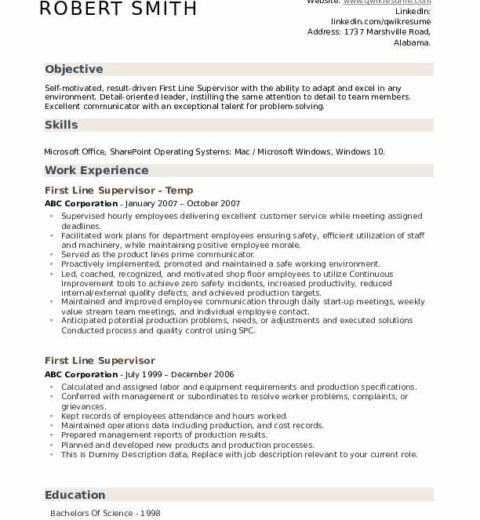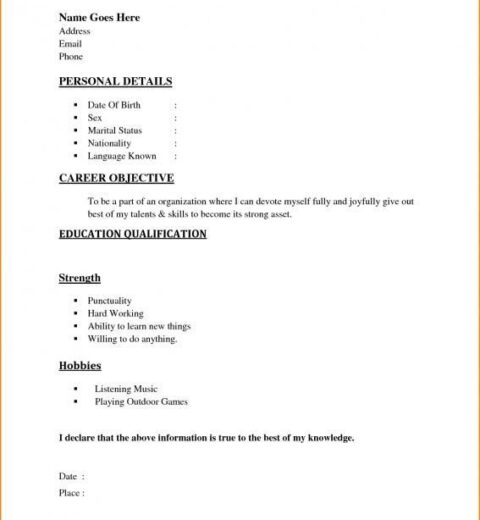In an age dominated by digital information dissemination and competitive job markets, a resume requires more than just a list of qualifications. It serves as your first impression, the pivotal entry point into an employer’s understanding of your skill set and professional narrative. Therefore, creating a resume that arrests attention from the outset is paramount. Achieving this is not merely about what you say; it’s equally about how you present it. Here, we will explore ways to initiate a resume that captivates, accentuates a distinctive element of your professional identity, and appeals aesthetically to the hiring manager’s sensibilities.
1. Constructing a Compelling Opening Statement
The initial section of the resume, often known as the summary or objective statement, is your opportunity to set the tone. It should brim with dynamism and encapsulate the essence of your professional ethos. Instead of conventionally reiterating your career prospects, consider utilizing a narrative style that weaves a story around a pivotal achievement or a professionally defining moment. This approach not only piques curiosity but also allows potential employers to glimpse your unique character traits.
Consider integrating a powerful descriptor or a vivid metaphor that characterizes your professional journey. For instance, instead of stating, “I am an experienced marketer,” you might craft an opening line such as, “An architect of innovative marketing strategies, I construct pathways that connect brands to their audiences.” This introduction is intriguing and suggests a proactive, creative mindset.
2. Emphasizing Key Characteristics
Having established a narrative flow with your opening statement, it is crucial to spotlight a defining characteristic that differentiates you from your peers. This could be a particular skill or trait, such as being data-driven, a visionary leader, or an adept communicator. To enhance intrigue, frame this characteristic within an accomplishment that highlights its significance.
For example, if your defining trait is analytical rigor, you might detail a scenario where your data insights led to increased sales or optimized processes. Phrasing it as, “By harnessing data analytics, I uncovered a 30% revenue increase through targeted marketing campaigns,” showcases not only your skill but the tangible impact of your capabilities.
3. Prioritizing Aesthetic Appeal
The visual design of your resume plays an equally impactful role in capturing attention. A cluttered, overly complex layout can obfuscate even the most impressive qualifications. Instead, opt for a clean, streamlined design that guides the eye naturally. Utilize ample white space to allow each section to breathe, creating a balance that is both aesthetically pleasing and functional.
Incorporate subtle design elements, such as infographics or color accents, to highlight essential information without overwhelming the reader. For instance, consider using a subtle background color or border specific to your industry. Such elements can provide a modern flair that sets your resume apart while maintaining professionalism.
4. Utilizing Action-Oriented Language
To sustain the reader’s interest, the language within your resume must be both engaging and vigorous. Ditch generic verbs in favor of compelling action words that convey enthusiasm and precision. Phrases like “spearheaded,” “cultivated,” or “engineered” carry a weight that can resonate more profoundly than conventional terms.
Moreover, resonance with the targeted industry’s vernacular can enhance credibility. Research industry-specific jargon or keywords and marinate your resume’s language with these terms, thus establishing a connection with the reader. This methodology not only showcases your expertise but indicates your investment in the particular field.
5. Crafting a Unique Value Proposition
Central to an attention-grabbing resume is a tailored value proposition that answers the implicit question, “Why should we hire you?” This can be presented near the top of the resume, forming a succinct, impactful statement that delineates what you bring to the table.
For instance, articulating a personal motto or philosophy could serve as a guiding principle, providing insight into your professional motivations. For example, a statement such as, “Driving success through collaborative innovation,” encapsulates both a work ethic and desired outcome that can intrigue potential employers.
6. Conclusion: The Lasting Impression
The concluding section of your resume is often overlooked yet remains critical in leaving a lasting mark. Instead of merely including a generic “References available upon request” line, consider what remains in the mind of the reader. You might include a personal project, a noteworthy volunteer experience, or a professional accolade relevant to the job your pursuing.
Ultimately, remember that you are not merely compiling a list of competencies, but crafting a narrative that unfolds upon the reader’s first glance. Each component of the resume, from the opening line to the finishing touches, should cultivate a sense of intrigue and facilitate an emotional connection, ensuring that your resume resonates in the minds of hiring professionals long after it has been reviewed. By meticulously weaving together aesthetics with an attention-grabbing narrative, you pave the way for a compelling presentation of your professional persona—one that undeniably stands out in a crowded field.




